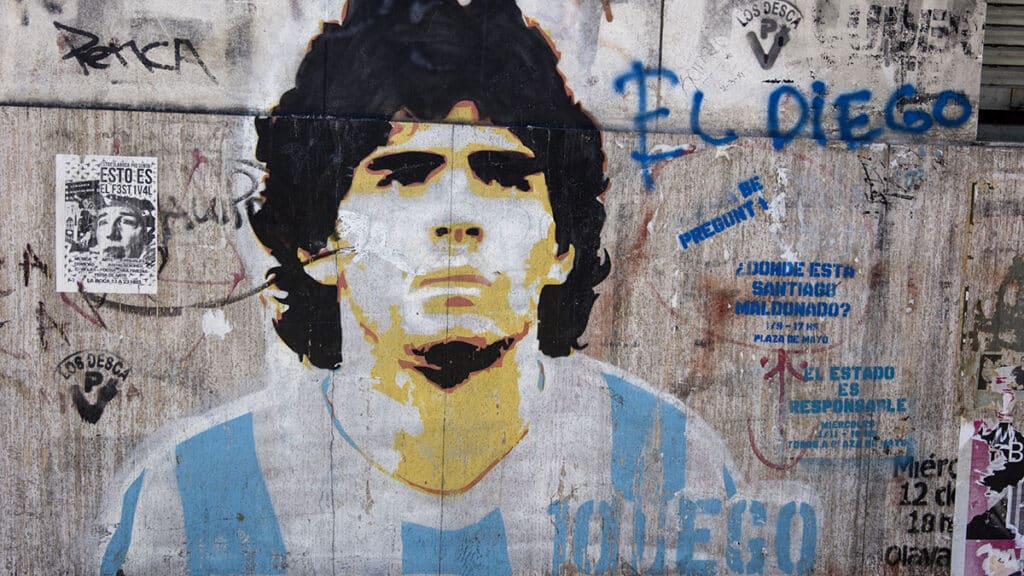Maradona, “El Pibe de Oro” (Golden Boy), was one of the greatest soccer players in history. He was a classic #10 who dribbled through crowds and seemed to have a magnetic relationship with the back of the goal. Giants fell before him. He could take the ball from the far end of the field and score.
The Hand of God
Diego played in four World Cups for Argentina.He is best remembered for his “Hand of God” goal in the 1986 World Cup quarter final against Argentina’s arch rivals England. It was a hand foul, but he got away with it. He knew it, but started celebrating right away and somehow the referees missed it. That impossible goal is considered the “Goal of the Century.”
Maradona was really fun to watch and inspired the teams he played on. Like many celebrities of that era, he had some problems, but we love him anyway.
Maradona

Diego Armando Maradona was born in Lanús, Argentina on October 30, 1960.
When he started his career at 16 with Argentinos Juniors in 1976, Maradona was the youngest player to ever play in Argentina’s Primera División.
Argentina is crazy for soccer. Even homeless people hustle to find enough money to go the game on weekends. It’s serious.
Many Latin countries express social tensions through their favorite teams. Argentina’s two big rivals are Boca Juniors of La Boca, and River Plate of Nuñez. Boca represents the working class and River represents the elite. River offered Maradona a ton of money to join them, but he chose to play for Boca in 1981. That year they won the Argentine title.
Maradona then went on to Europe, playing first for Barcelona in 1983. Spain has a similar intense social rivalry between Barcelona and Real Madrid. When Maradona led Barcelona to a win an “El Clásico” at Real Madrid’s stadium, even the Madrid fans applauded him. That’s how great and how loved he was.
In 1984, Maradona moved to Napoli in Italy where he reached the peak of his club career. He led Napoli to the best times in their history with titles in 1986-87 and 1989-90.
He led Argentina in four World Cups including their 1986 win in Mexico City.
Diego took his place on heaven’s team on November 2, 2020. He is buried in Jardín de Bella Vista cemetery in Bella Vista, Argentina.
